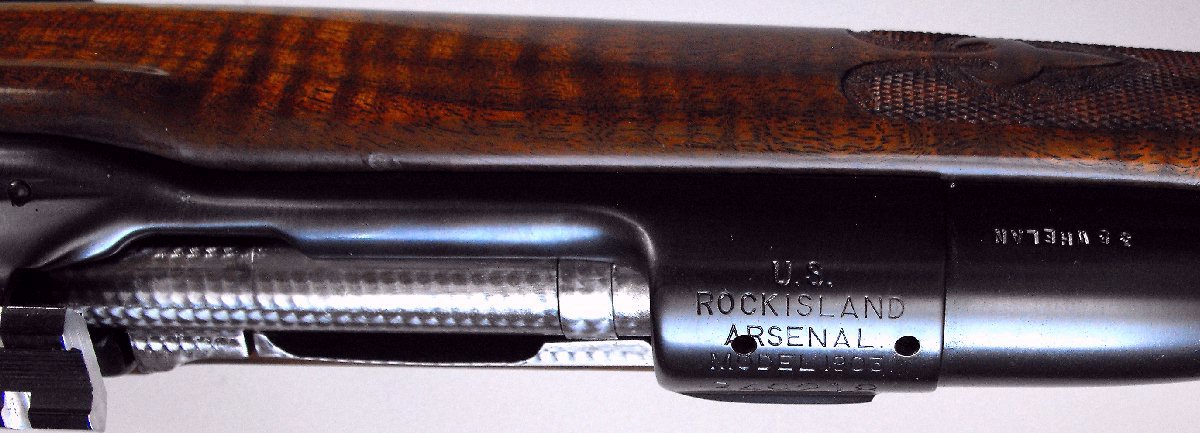Hello all,
For your interest, I brought this discussion over from another Forum. This all started about 2 weeks ago when a forum member said he was looking for a "non-bubba" rifle in 35 Whelen caliber, where upon I offered to sell him one of my most prized collectables, a Custom Mannlicher stocked 1951 Winchester Model 70 in 35 Whelen caliber, built by the famous Leonard Mews. He declined, so I posted my Mews rifle for sale in the Classifieds. Unfortunately, (for me) it sold in less than a day and left me without a 35 Whelen, but perhaps this was an omen of things to come ... or simply an excuse to buy another?
One of the Forum members answered the want ad with; "I believe I saw a very nice one on Doug Turnbull's website recently. Itís a 1903 Springfield in 35 Whelen."
Ď03 Springfield .35 Whelen Another member wrote: "The Springfield that Doug Turnbull has is low numbered. That bothers some people. But it is beautiful. And the price is right, at
$1,500."
And another wrote: "It is beautiful. But low-numbered Springfield receivers can still blow up, which is why folks avoid them."
As much as I liked this Custom Springfield, it caused me some concern, so I researched the "Low Number Springfield" issue. Here's what I found.
In the history of the low-numbered Springfield receiver failures, there is much "miss-information" and undeserved negativity, and urban legend, regarding those low numbered Springfield rifles.
Some time ago there was a scientific study by Joseph L. Lyon, M.D., M.P.H. called: "Information on M1903 Receiver Failures" His study covered both the Low Numbered Springfields and the Low Numbered Rock Island Arsenal rifles.
The study states that there had been 33 reported receiver failures of Springfield receivers in the low serial number range of 001 up to serial number 800,000. That accounts for about 4/1000th of 1 percent, and none of those failures resulted in a death.
He went on to say ...
Risk of One Death per 100,000 population in a Single Year Caused By:
Riding a bicycle 100 miles;
Smoking 14 cigarettes;
Living 20 months with a smoker;
Traveling 1500 miles by automobile;
Traveling 10,000 miles by jet aircraft;
His conclusions; "The problem of Springfield receiver failures was a rare event throughout the service years of the Springfield rifle despite statements to the contrary."
His study also indicated that the failure rate was variable by year. Of the 15 years between 1903 and the end of 1917, when the heat
treatment method was changed, there were no failures in five of the years. Those years were; 1908, 1909, 1910, 1912, and 1915.
The complete study can be read here;
http://webcache.googleusercont...=us&client=firefox-bThe Turnbull Springfield in question was produced in 1908, a production year with no recorded failures. Since I sold my Leonard Mews 35 Whelen, and still had lots of Whelen ammo, I decided to replace it with the Turnbull Springfield. It came to reside in its new home in Wisconsin.
I've posted some pictures below. This Springfield advertised on Doug Turnbull's web-page was not a Turnbull restoration, rather it is one of several vintage custom rifles built at a "classic time" that were being sold by Doug Turnbull on consignment, for the widow of the deceased owner. I'm hoping to learn more about its builder. I still can't believe no one jumped on this. Based on the features described and the photos in the listing, it represented a "sure-thing" bargain. Features like; a custom contoured action in high polish deep blue finish, a custom bolt handle with a hollow bolt knob, a custom AA Fancy grade French walnut stock with shadow out-lined cheek-piece, with a black ebony forend tip, with an early style "Fleurs & Ribbons" checkering pattern, with a Niedner style skeleton steel grip-cap with a smooth wood island, with a Niedner style skeleton curved steel butt-plate with a checkered wood island with a widow's peak inlet at the top, a custom Winchester style swing safety, a custom hinged floor-plate with inside trigger-guard release, a pair of recessed sling swivel mounts, a jeweled bolt with a jeweled extractor, a drilled & tapped receiver, a 24" medium weight commercial barrel in high polish deep blue finish chambered in 35 Whelen caliber, and a hand-tooled leather sling with Winchester Super-Grade sling swivels. And, Oh Yes, ... a 3x9x50mm Tasco World Class scope, in Weaver rings and bases. I didn't like the Tasco scope so I replaced it with a vintage Lyman All American scope that I've squirreled away, waiting for a classic rifle.
When the rifle arrived, I examined it in great detail - what a beauty! Not surprisingly, I also found the trigger had been upgraded to a fully adjustable Timney.
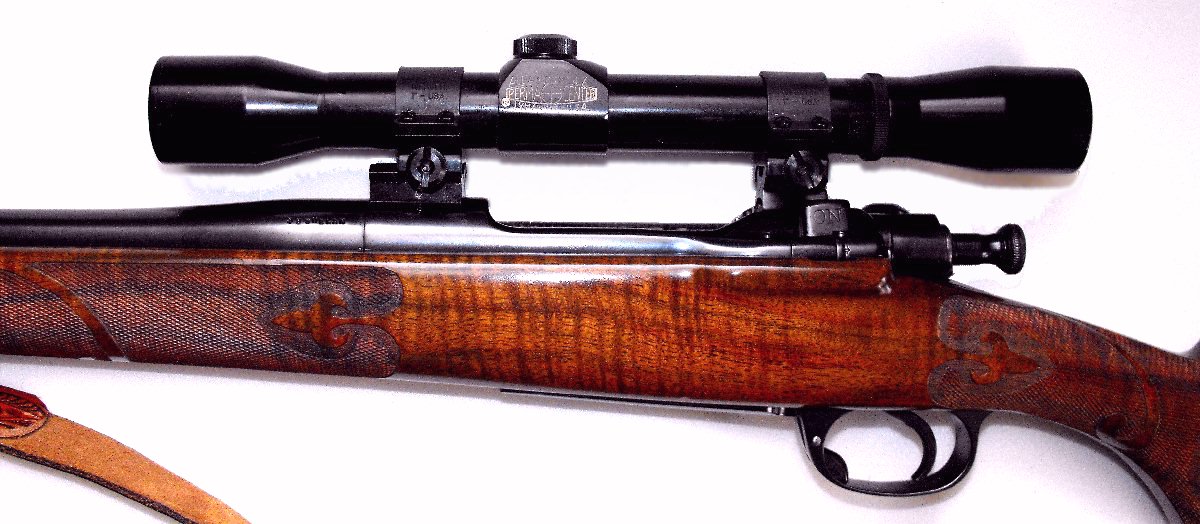
Here's the comparison of the rifle as received with the Tasco scope (top) and the rifle with the replacement Lyman All American scope. (bottom)
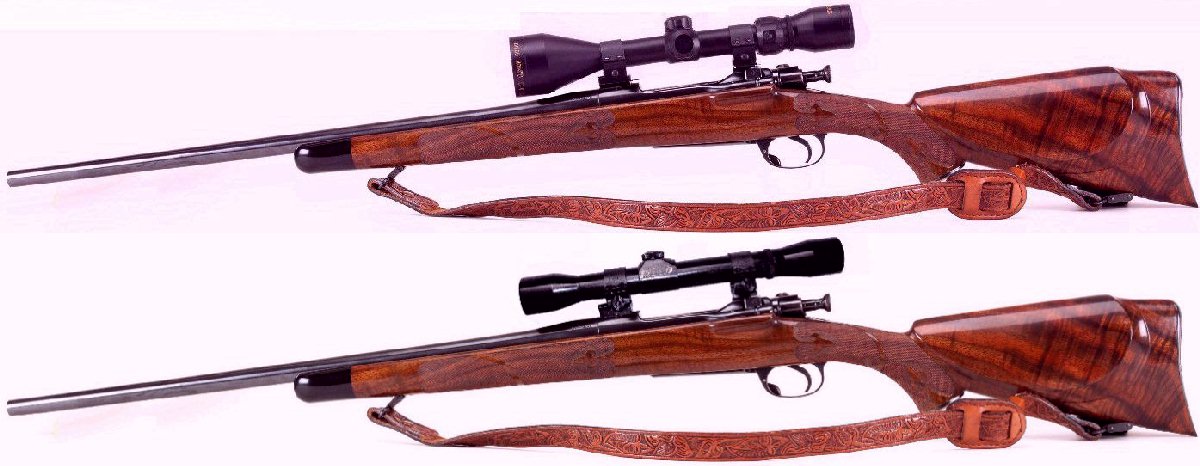
Here are a couple of pictures of the Grip-Cap and Butt-Plate. There is also a blank Sterling Silver Escutcheon, just waiting for my initials.

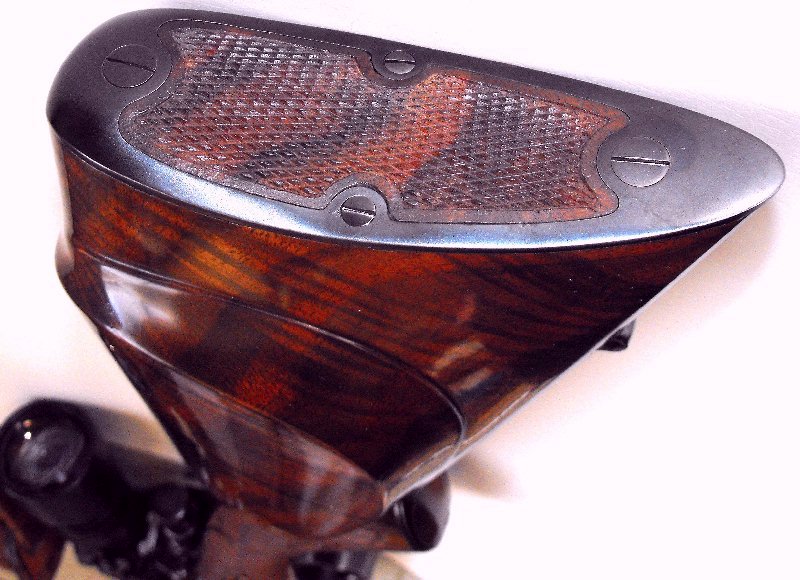
Here are a few pictures of the checkering. This exact style of checkering is shown and described on pages 46, 47, 48, in Monty Kennedy's book; "The Checkering and Carving of Gunstocks". It is labeled as the no. 8 pattern. There is also a picture on page 291 showing a rifle checkered by Jerry Fisher with this same pattern.
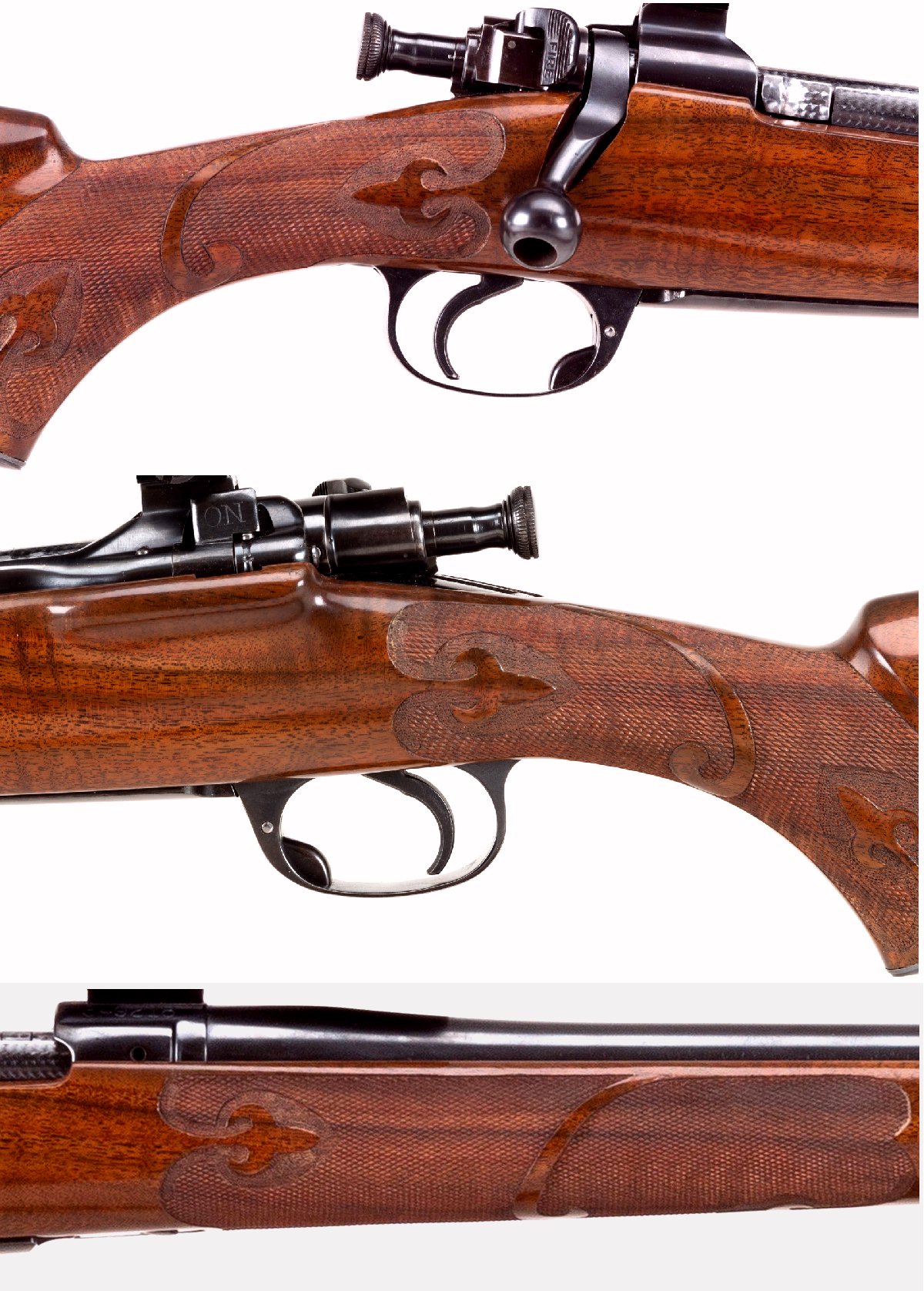
But, not everything was
GOOD about this rifle; it had a
BAD .... The builder of this Custom rifle must have flunked spelling because "Whelen" is spelled wrong ... unless there is some strange wildcat called a "35 Whelan"? ... (I had to deactivate my spellchecker to type that.)
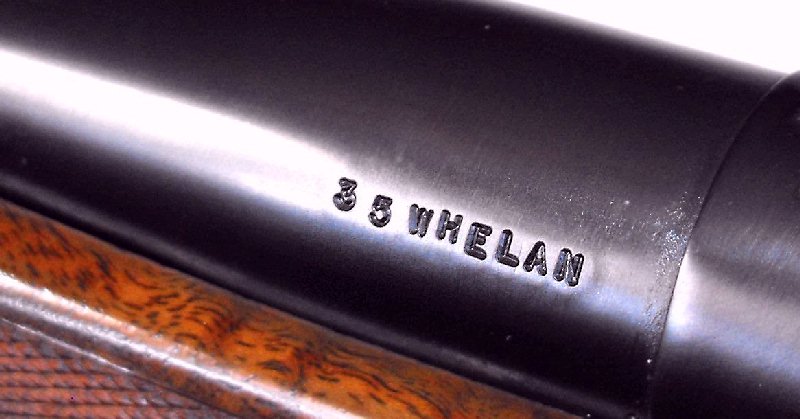
.
.
.
However, I found a remarkable, undetected
GOOD.
.
.
When I removed the front scope base, I discovered that this rifle is
not a "low numbered" Springfield after all - Its a "high-numbered"
Rock Island Arsenal M-1903. This receiver is not only beyond the safe high-numbers double heat-treat era, its actually from the later, even higher quality, Nickel-Steel era. So much for all that worry about possible receiver failure of a low numbered Springfield. Lucky for me, I'm guessing the low-number concern kept a lot of people from buying this rifle. The lesson to be learned is; Just because it "looks" like a Springfield, doesn't mean it "is" one.
In the end, this has turned out to be a much better deal than I had ever expected. I'm very blessed to have such good luck.
